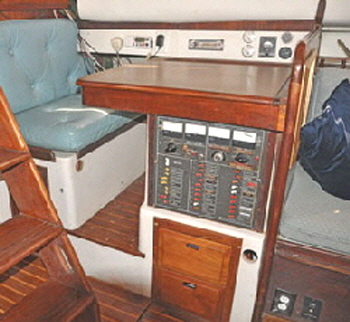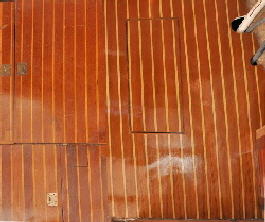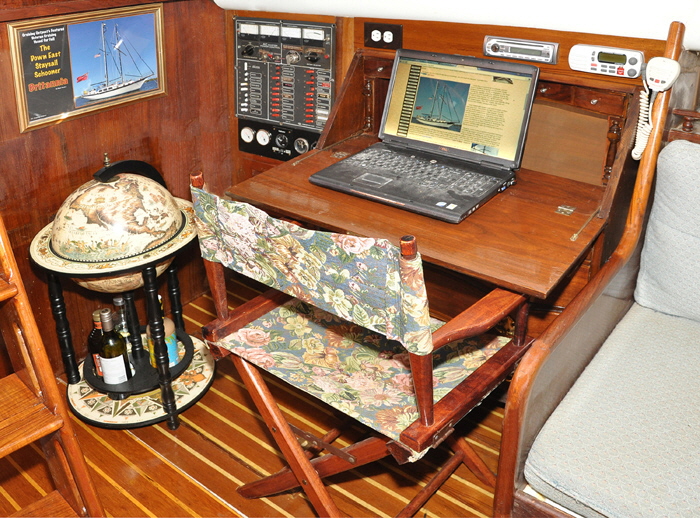 Since the advent of the Global Positioning System of navigation (GPS), there has been little use for the old style chart table on Britannia. Most passage making navigation is done on the Raymarine multi-function display on the helm pod, then transferred to a paper chart on the saloon table roughly every hour. The chart table was only used to store things that didn't have a permanent home, and as a desk for a laptop.
Since the advent of the Global Positioning System of navigation (GPS), there has been little use for the old style chart table on Britannia. Most passage making navigation is done on the Raymarine multi-function display on the helm pod, then transferred to a paper chart on the saloon table roughly every hour. The chart table was only used to store things that didn't have a permanent home, and as a desk for a laptop.
Advancements in equipment, particularly electrical and navigational devices should cause us to re-think some of the more traditional methods and layouts, like chart tables. Our trusty sextant served us well on past ocean passages, but it now hangs in its teak box on the saloon wall, an enchantment and reminder of bygone days.
The space between the edge of the table and the companionway ladder was a narrow 10-inches, and squeezing into the seat frequently resulted in accidentally tripping contact breakers on the master power distribution panel at the side of the table.
An ornate secretary's desk, (bureau) has a hinged drop down lid with drawers and compartments inside and four large drawers below, With the lid open it was the same size as the old chart table.
 Unfortunately, the builders had not extended the teak and holly cabin sole under the old chart table as they had on other parts of the boat. It was just raw plywood so a new floor with 3/4” inch plywood, was makde, including a hatch to give easy access to the three sea cocks and filters below. The power distribution panel was repositioned in the corner, where the breakers could no longer be accidentally tripped.
Unfortunately, the builders had not extended the teak and holly cabin sole under the old chart table as they had on other parts of the boat. It was just raw plywood so a new floor with 3/4” inch plywood, was makde, including a hatch to give easy access to the three sea cocks and filters below. The power distribution panel was repositioned in the corner, where the breakers could no longer be accidentally tripped.
A comfortable folding deck chair fits perfectly and can be used at the dining table when needed. An antique looking 16th century globe drinks holder that fits next to the bureau, secured in two teak collars in the floor.
It is now considerably easier and much more comfortable to sit at the desk, and the whole saloon appears much bigger. It is now more like a neat little office than a navigation area.
